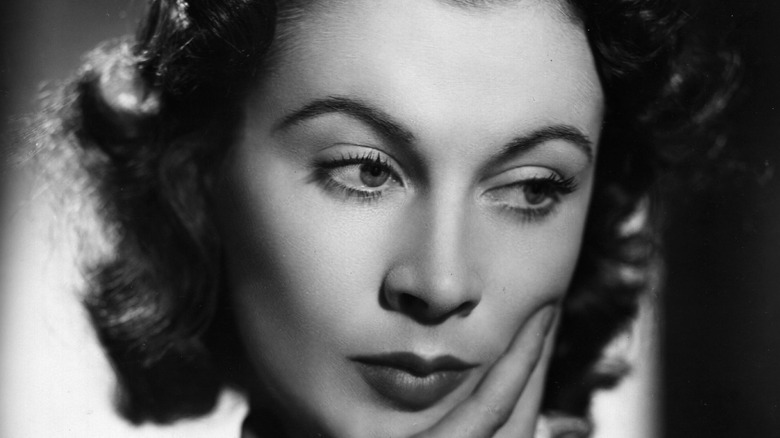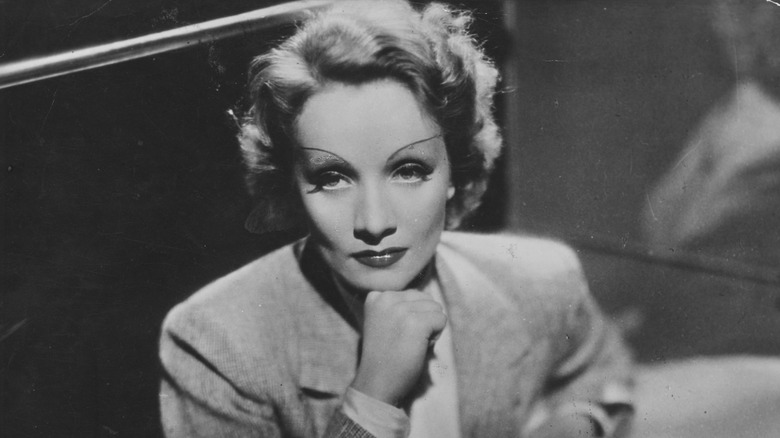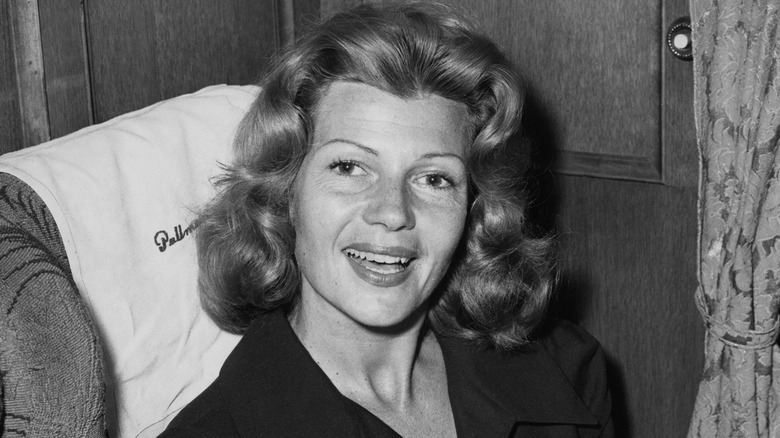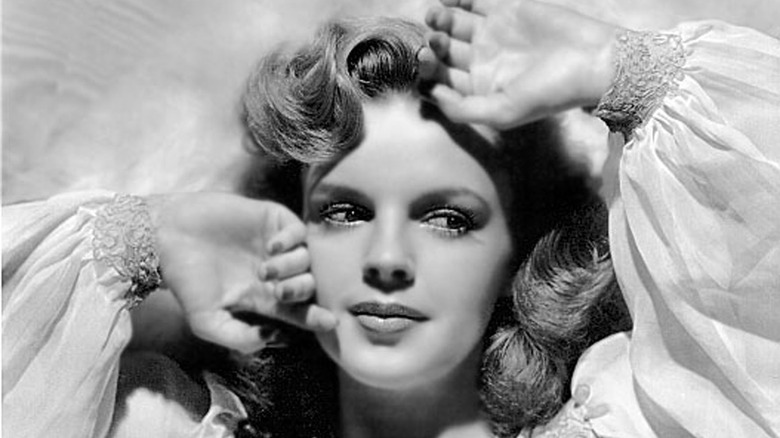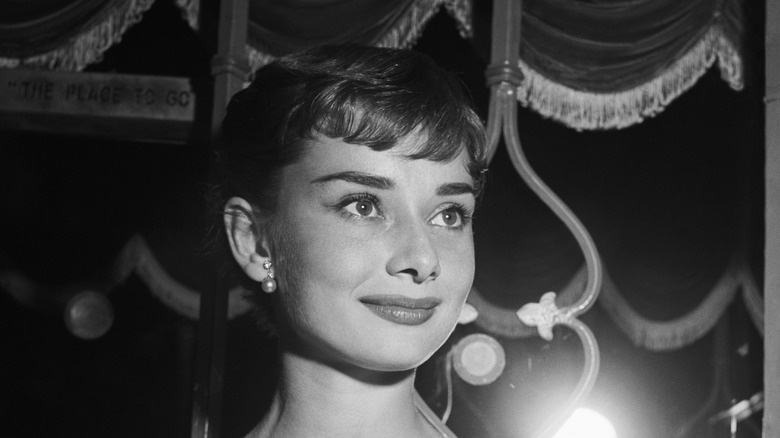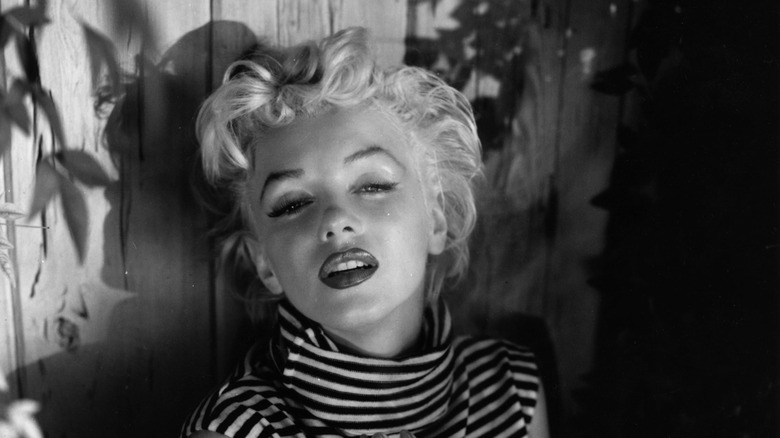The Disturbing Ways Old Hollywood Actors Changed Their Appearances
Hollywood actresses from the past are often heralded for their "natural" beauty. Their looks might be described as iconic, classic, and, in many cases, timeless. When we marvel over the Golden Age of Super Stardom, we view it through a nostalgic lens that inspires a sense of awe and whimsy and perhaps just a teensy bit of naivete.
Surely stars like Rita Hayworth and Marilyn Monroe were naturally beautiful, we assume. After all, there was no such thing as a Brazilian butt lift back in the 1950s (via Vox). Botox wasn't backed by the U.S. Food and Drug Administration (FDA) and the public until roughly the 1990s, according to CNN News. The multi-million-dollar marketing campaign that popularized the poisonous technique began in 2002. And photo filters as we know them today were decades away from materialization.
Still, just because the surgeries and digital filters used by modern stars were unavailable doesn't mean the on-screen vixens of yesteryear were effortlessly beautiful. In fact, according to Racked, such starlets were poked, prodded, and contoured, their teeth adorned with porcelain caps, their stray freckles removed with harsh chemical peels, their makeup meticulously applied by 52 separate sets of hands, all so they could appear to the public as these pictures of perfection. Here's a snapshot of what went on behind the scenes of vintage cinema, where beauty was every bit as manufactured as it is today.
The Croydon Facelift made famous by Marlene Dietrich
Marlene Dietrich first graced the silver screen with her bedroom eyes and cutting cheekbones in the early 1920s (via IMDb). Throughout her career, she introduced the public to "The Tragedy of Love" and a "The Ship of Lost Men," not to mention "Der Blaue Engel," which was the first talking picture film in Germany, according to Biography. When she wasn't seducing the public with her sultry voice, she was adorning her face in surgical tape and topping the look off with a tight, high ponytail in order to achieve those iconic cheekbones (per Marie Clarie).
Like most beauty techniques, this strategically positioned ponytail, meant to draw her cheekbones in an upward position, came at a price. The look, which became known as the Croydon Facelift, is said to cause permanent hair loss, according to the Independent. The hair loss was likely not a big deal to the starlet, who is rumored to have also surgically removed her molars to achieve and maintain her famous facial structure. Talk about literal cringe!
Erasing features with electrolysis and hair dye
There has been much ado about racial discrimination and the harmful perpetuation of stereotypes during the Golden Age of cinema (via Guardian). What's spoken about less, however, is the "whitewashing" of actors and actresses hailing from minority backgrounds. Take, for example, Rita Hayworth, who held the old Hollywood title of the "All-American Girl."
Marie Clarie reports that in order to achieve this prestigious title, Rita Hayworth, whose birth name was Margarita Carmen Cansino, had to shed much of her Latina heritage. This included her name and also her hairline, which was originally a full inch lower on her face. After some extensive electrolysis treatments and applications of lighter hair dye, Hayworth's transformation was complete.
This might have been a hair-raising experience, but it was, in no way, unique to Rita Hayworth. Marilyn Monroe is said to have undertaken similar procedures to remove her widow's peak.
High doses of diet pills and harmful weight loss injections
According to History, drugs were a dark secret eclipsing the Golden Age of Hollywood. These drugs weren't just used to alter the actors' and actresses' state of mind. They were also notoriously used to alter their appearances. The most well-known example of this is perhaps also the saddest. For film classic blockbusters like "The Wizard of Oz," young actress Judy Garland was force-fed copious amounts of harmful pills in order to keep her weight down and her energy up. Biography reports that Garland tragically died at age 47 due to an overdose as a direct result of a substance use disorder which many believe started with the studio.
This very same struggle was passed on to other stars who were also encouraged to take dangerous drugs to maintain their trim, on-screen figures (per History). For example, '50s actress Joanna Moore was prescribed mood and image-altering amphetamines for weight loss which her Hollywood doctor elusively described as "vitamin injections." Dr. Lee Siege of Twentieth Century Fox spoke candidly on the subject years later, stating, "Pills were seen as another tool to keep stars working."
The skinny on these weight loss tactics only gets worse. Harper's Bazaar reports that weight control wasn't optional for these classic vintage actresses. It was built into their contracts, further driving the incentive to go to drastic, sometimes deadly, lengths.
If you or anyone you know needs help with addiction issues, help is available. Visit the Substance Abuse and Mental Health Services Administration website or contact SAMHSA's National Helpline at 1-800-662-HELP (4357).
Extreme makeovers courtesy of 52 cosmetologists
As is true in modern times, Hollywood icons of the past were forced to undergo what Racked referred to as "identity-shifting transitions." They would then be given an image they would have to maintain in every sense of the word. In fact, leading entertainment corporation MGM Studios had approximately 52 cosmetologists on hand to ensure their strict standards were met. Stars endured facial contouring procedures using gelatin and putty. They had their freckles removed with harsh chemical creams. They wore false teeth, porcelain dental caps, and Pan-Cake makeup manufactured by Max Factor, to present themselves as flawless. Even male actors were in on the gig, donning false mustaches and phony muscular physiques.
And if putty and Pan-Cake makeup sound benign compared to some modern procedures, then how about a little needle in the eye? According to Byrdie, classic doe-eyed Audrey Hepburn achieved her iconic eyelashes with just a dab of mascara. She then separated each lash with a pin. You will never look at old Hollywood quite the same way.
Plastic surgery was on the table
According to Harper's Bazaar, beauty was so sought after in the early years of Hollywood that the phrase "looks over talent" became a backstage motto for most. Racked reports that there is an entire stockpile of photos exposing vintage Hollywood stars for exactly what they were — imperfect individuals just like everybody else.
Camera tricks as crafty as any Instagram filter were often used. But if all else failed, plastic surgery was, literally and figuratively, on the table. According to the Independent, plastic surgery predates vintage Hollywood and even predates anesthesia, as painful as that sounds. In 1901, a corporation known as the Derma Featural Company stepped on the scene promising surgical enhancements for several "ailments," the most notable being "ill-shaped noses." Rhinoplasty, a method used to reshape a patient's nose, was in full effect in the early 1900s.
Procedures wherein skin grafts were removed from the arm and redistributed to shape someone's nose were less talked about, but they most certainly happened. One particularly stomach-turning example of rhinoplasty consists of a patient's nose being injected with scorching hot paraffin wax and then molded like a sculpture upon the face (per the Independent). In worst-case scenarios, the wax could cause cancer or permanent disfigurement of the face. Some stars are believed to still have taken that risk, such as Marilyn Monroe, whose posthumous skull x-rays suggest the cartilage at the tip of her nose was reshaped (via Marie Claire).
